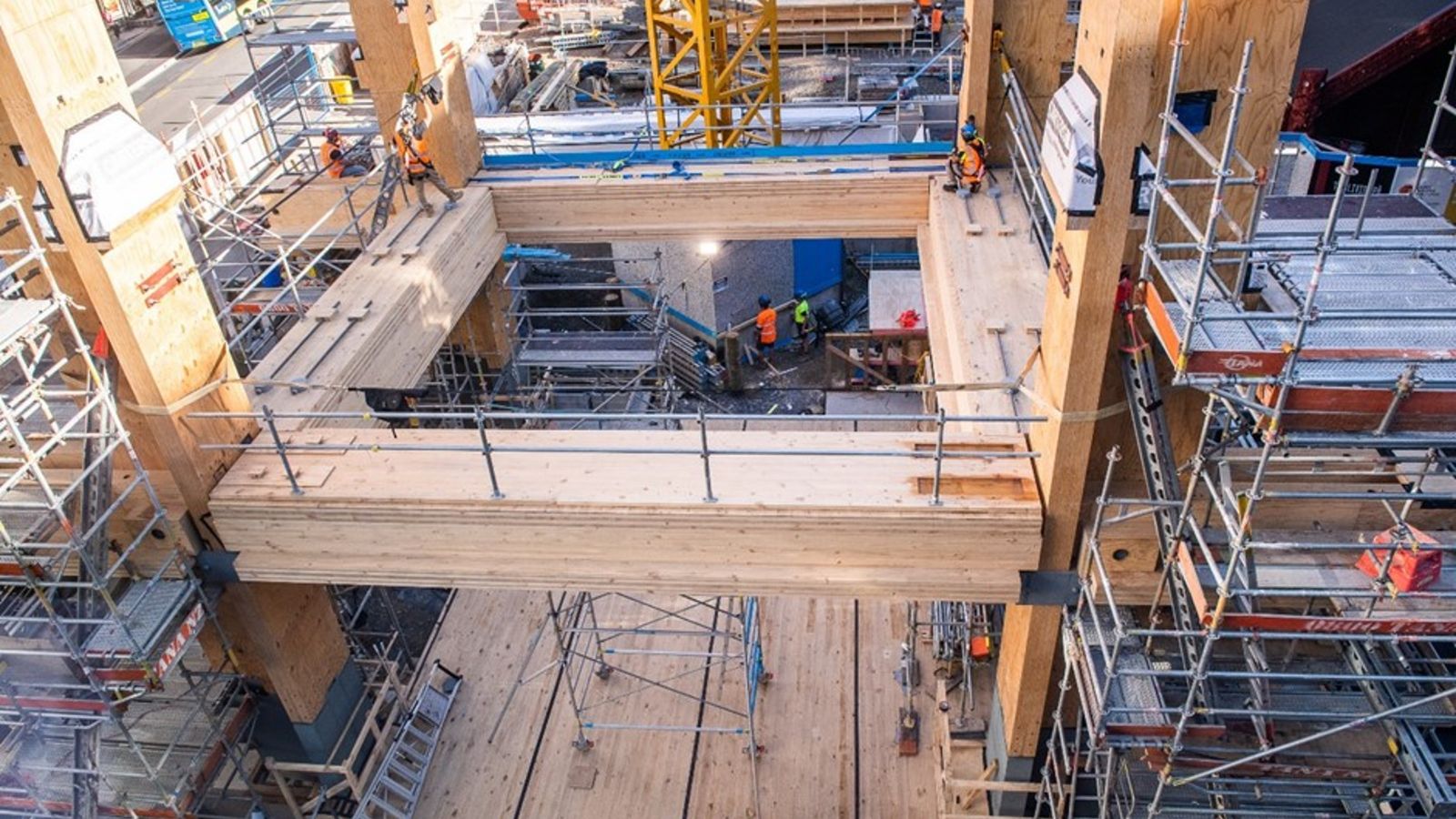Work seems to being ramping up every week now, and the on-site team are starting to grow as workstreams open up. Retaining wall work is going well, the piling team will be back soon, the excavation is largely complete for the rainwater retention tanks, and more timber is arriving!
Most obviously big columns, beams and panels are being lifted into their positions, and we can really see the Living Pā’s form coming together. Unseasonable winds, at times, have stalled the lifting of these large, prefabricated panels, however, when they’re moving it’s astonishing to watch how quickly the components come together. The B2 beams, which point north and south for reference, have apparently been the most difficult to move into place and have required more finesse. The team have had to lift them down on a lean, spin them around, then pulled up to return to level as the beams knife around the columns. L.T. McGuinness have posted some cool socials that follow this work well, see their Facebook, TikTok and Insta.
The 1300mm long and 150mm diameter solid steel pins that connect the columns and smaller ‘wing’ beams together are being pulled through with a 20-tonne hydraulic jack. A quirky fact with this part of the install sequence is that the team are using cooking oil to lubricate the pin as it is pulled through the beam and column. To use a traditional construction lubricant, the team would have to go down the LBC compliance path, but the cooking oil is organic. Beeswax was another contender. It’s a wonder to watch cutting-edge components matched to something in my kitchen.
Working with timber moisture is a big concern and the team have installed wireless moisture meters screwed into different positions around the site. The meters read the timber moisture content at different depths while also recording the outside temperature and humidity. The whole system then feeds this information to a database where Dunning Thornton, our structural engineers, can access and interpret the data also, and everyone has a clear view of what going on.
Hopefully the weather will be kind.
Nā
Rhonda
Te Herenga Waka—Victoria University of Wellington


